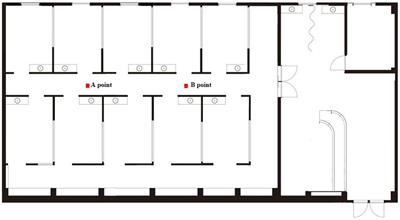A study on the influence of dominant sound sources on users' emotional perception in a paediatric dentistry clinic

This study selects a typical paediatric dentistry clinic for questionnaire surveys and field testing, aiming to explore the perception of dominant sound sources on the emotional perception of users within paediatric dental clinics.The results indicate that emotional perception is a factor influencing users' evaluation of the soundscape; in the soundscape of paediatric dental clinics for young paediatric patients, users experience negative emotional perceptions (nervousness, restlessness, anxiety, anger, fear, pain) and emotional responses of hostility.The dominant sound sources can be divided into two categories: dental (dental drill, air-water syringe, saliva ejector) and non-dental (children crying).Under the influence of dental dominant sound sources, there was a significant negative correlation between the emotional perceptions of healthcare workers and their negative emotional perceptions (P<0.05). Conversely, for young paediatric patients aged 0-11 years, a significant positive correlation was observed between their emotional perceptions and negative emotional perceptions.
The mean perceived degrees of nervousness and fear in young paediatric patients were 1.82 and 1.71 times stronger, respectively, than those observed in healthcare workers.Under the influence of non-dental dominant sound sources, the average degree of emotional perception among healthcare workers was 0.71 higher than that of young paediatric patients, and anxiety perception was significantly enhanced (P<0.05).
The mean degree of nervousness perception was 1 point higher in healthcare workers compared to young paediatric patients, restlessness perception was 1.1 stronger, and there was a presence of mild pain perception. In terms of demographic/social factors, age, occupation, and years of work significantly affected the perceptions of fear and restlessness among healthcare workers, while age had a significant impact on the emotional reaction of hostility in young paediatric patients.
Read the full article at the original website
References:
